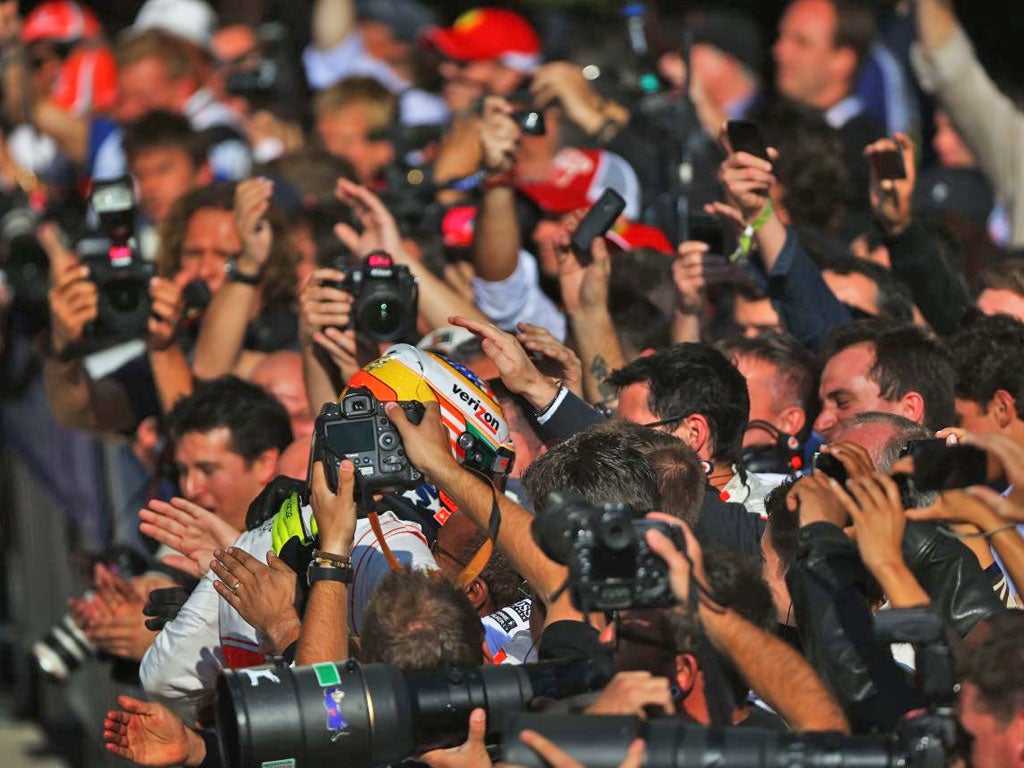Big and bold Austin delivers as America's new home of F1
Drivers love new track that puts together sections from Silverstone, Hockenheim and others

Lewis Hamilton's brilliant victory over Sebastian Vettel in Sunday's US Grand Prix at the Circuit of the Americas here in Austin was the icing and the cherry on a cake that had universally been deemed delectable long before the race started.
A huge amount of effort went into creating a decent race track, which combined sections from other tracks, such as Interlagos, Silverstone, Hockenheim and Istanbul Park, and would be challenging and offer drivers the possibility to overtake. They loved it.
"It's a great drivers' track," Hamilton said. "It's very tough to pull together three perfect sectors. Personally, I find the final two sectors easier than the first; those high-speed changes of direction need a good set-up, and balancing that requirement against the demands of the slow-speed stuff is tricky.
"Turn One probably looks more exciting from the outside than it does from inside the cockpit, but it's certainly not easy. You can get oversteer, or lock-up, and it's tricky to get a perfect line through there."
McLaren team-mate Jenson Button, who finished fifth, agreed. "Turn One is a strange corner, with a very wide entry rather like Turn Three in India. The section from there to Turn Nine is brilliant and free-flowing. Turn Three, the start of the esses, is fantastic. It's quicker than Becketts at Silverstone. It's very unusual to find a section of corners like this on a modern Formula One track. I love it."
Button was doubtful about overtaking opportunities, but while the leaders found it hard when following one another, he drove an aggressive race, passing many cars. "We were surprised that the drivers found places we hadn't expected to see used for overtaking," said race steward Tim Mayer, whose father Teddy used to run McLaren in the pre-Ron Dennis days.
They do things bigger in Texas, whether it's the grandly titled circuit's viewing tower which looks like it should be the ultimate thrill ride; the Friday crowd for a US GP which doubled the raceday crowd in Phoenix; or the number of celebrities in the paddock. It was teeming not just with famous faces from racing, but with actors, singers, entertainers, movie-makers and shakers, athletes from other sports and politicians. Some were esoterically American, but that wasn't the point. Many people who weren't there would be left wishing they had been. When you remember the first races in China and Korea, the comparison was embarrassing.
But, crucially, there was one area in which size was not too excessive, and that was Austin itself. If you'd been given 10 dollars for every time you heard an old stager suggest that it reminded them of Adelaide, you'd have been able to sponsor a team. The final race in Australia's City of Churches attracted 500,000 people. It was the focal point, the carnival which everybody wanted to join and be part of. Street parties abounded. When the Australian GP moved to Melbourne, with three times the population, the race became just another event and some of the magic was lost.
Downtown Austin heaved just like Adelaide did and like downtown Montreal still does, with signs everywhere welcoming the race. The FanFest street shows proved massively popular. It was F1 marketing the way it should be done. In the days when F1 struggled to excite people in Phoenix, the crowd was around 35,000 and interest in the race minimal. Here, 65,360 came on Friday alone. 82,710 on Saturday. 117,429 on Sunday, making a total of 266,499 spectators for the weekend. Those are Silverstone-type figures.
And they came from all over, Americans, of course, but also Mexicans, there to support Sergio Perez, whose Sauber was unfortunately beset by brake problems. And South Americans too, to support Felipe Massa and Bruno Senna. They were angered when Ferrari employed some questionable tactical subterfuge by deliberately breaking a seal on Massa's gearbox, so he would be penalised five grid places and team-mate Alonso could thus move up to start on the clean side of the grid. But the FIA deemed it perfectly legal, and after a brilliant performance, Massa admitted he was quite happy after all to have started 11th. Imagine what it will be like when an American driver, such as up-and-coming Alexander Rossi, gets a race drive.
British race veteran Ann Bradshaw, who was part of the circuit's media team for the weekend, noted: "I went out to the sales stands and they were queuing 50-deep."
On the podium, Hamilton said: "The fans have been amazing this weekend, so thank you so much. The warm welcome we've had has been fantastic and I think this is probably one of the best, if not the best, grand prix we've had all year. I'm so grateful for the support we've had."
Was the US GP a success? It was a lot more than that.
Subscribe to Independent Premium to bookmark this article
Want to bookmark your favourite articles and stories to read or reference later? Start your Independent Premium subscription today.

Join our commenting forum
Join thought-provoking conversations, follow other Independent readers and see their replies